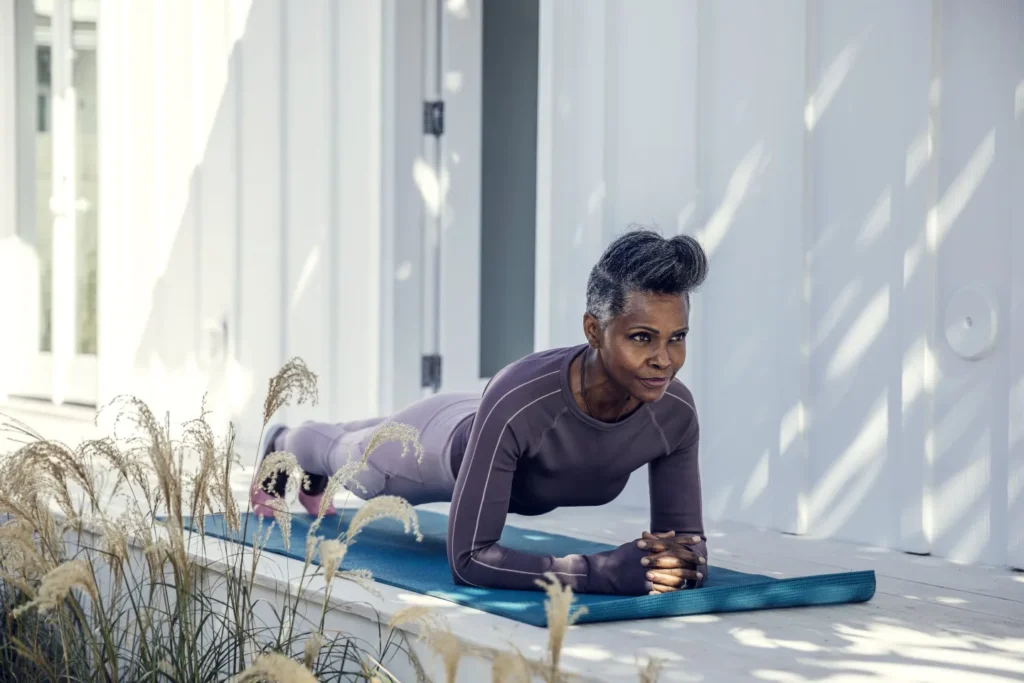As we age, maintaining strength, mobility, and overall fitness becomes increasingly important. By focusing on functional exercises that build muscle, improve balance, and enhance flexibility, you can stay fit, strong, and independent well into your later years. Below are some of the best exercises to incorporate into your routine as you age.
1. Squats
Squats are one of the most effective exercises for maintaining lower body strength. This functional movement mimics everyday activities like sitting and standing, targeting your glutes, quads, and core muscles. As you age, keeping these muscles strong is essential for mobility and balance.
- How to do it: Stand with your feet shoulder-width apart, lower your hips back and down like you’re sitting into a chair, keeping your chest up and knees behind your toes. Press through your heels to return to standing.
2. Deadlifts
The deadlift is a powerful full-body exercise that strengthens the posterior chain, which includes your back, glutes, and hamstrings. This exercise is particularly beneficial as it helps maintain proper posture and supports everyday movements like lifting and bending over.
- How to do it: Hold dumbbells in each hand, standing with feet hip-width apart. Hinge at the hips and lower the weights down to your shins, keeping your back straight. Push through your heels to return to standing.
3. Push-ups
Push-ups are a great way to build upper body strength, targeting your chest, shoulders, triceps, and core. As a weight-bearing exercise, they also help maintain bone density, which is crucial for preventing osteoporosis as you age.
- How to do it: Start in a plank position with your hands under your shoulders. Lower your body until your chest nearly touches the floor, keeping your core tight and body in a straight line. Push back up to the starting position.
4. Lunges
Lunges are excellent for strengthening your legs, improving balance, and correcting muscle imbalances. As a unilateral exercise, they work one leg at a time, which can help prevent injuries and enhance coordination—important factors as you age.
- How to do it: Stand with your feet together, then step forward with one leg. Lower your hips until both knees are bent at about a 90-degree angle. Push back up through your front foot to return to standing.
5. Planks
Core strength is key to maintaining good posture, preventing back pain, and improving balance. Planks are a simple yet highly effective exercise to strengthen your core muscles, including your abs, back, and shoulders.
- How to do it: Get into a forearm plank position, with your elbows under your shoulders and body in a straight line. Hold this position while engaging your core, keeping your back flat.
6. Rows
Rowing movements are fantastic for building back strength and improving posture. Whether you use dumbbells or resistance bands, rows work the muscles that are often neglected, especially if you spend a lot of time sitting.
- How to do it: Stand bent over at the waist with a dumbbell in each hand, arms hanging down. Pull the weights toward your ribcage while keeping your elbows close to your body, then lower them back down with control.
7. Walking or Jogging
Regular aerobic exercise is essential for cardiovascular health. Walking or jogging is a simple, accessible way to maintain endurance, burn calories, and improve heart health. Aim for at least 150 minutes of moderate aerobic activity each week.
- How to do it: Walk at a brisk pace for 30 minutes a day, or alternate between walking and jogging if you’re more advanced.
8. Stretching and Yoga
Flexibility declines with age, so incorporating stretching or yoga into your routine is key to maintaining mobility. Yoga not only stretches your muscles but also helps with balance, coordination, and relaxation.
- How to do it: Try a beginner’s yoga class or follow a routine that includes stretches for your hamstrings, hip flexors, and shoulders.
Final Thoughts
Staying fit and strong as you age doesn’t require a gym membership or complicated routines. By focusing on simple, functional exercises like squats, lunges, and deadlifts, combined with regular cardio and flexibility training, you can maintain strength, mobility, and independence well into your later years.
Consistency is key—start slowly and progress as your strength and endurance improve. Remember to listen to your body and modify exercises as needed. The goal is not only to stay strong but also to enjoy an active and healthy lifestyle.

[…] Read Also: 8 Best Exercises To Stay Fit As You Age […]